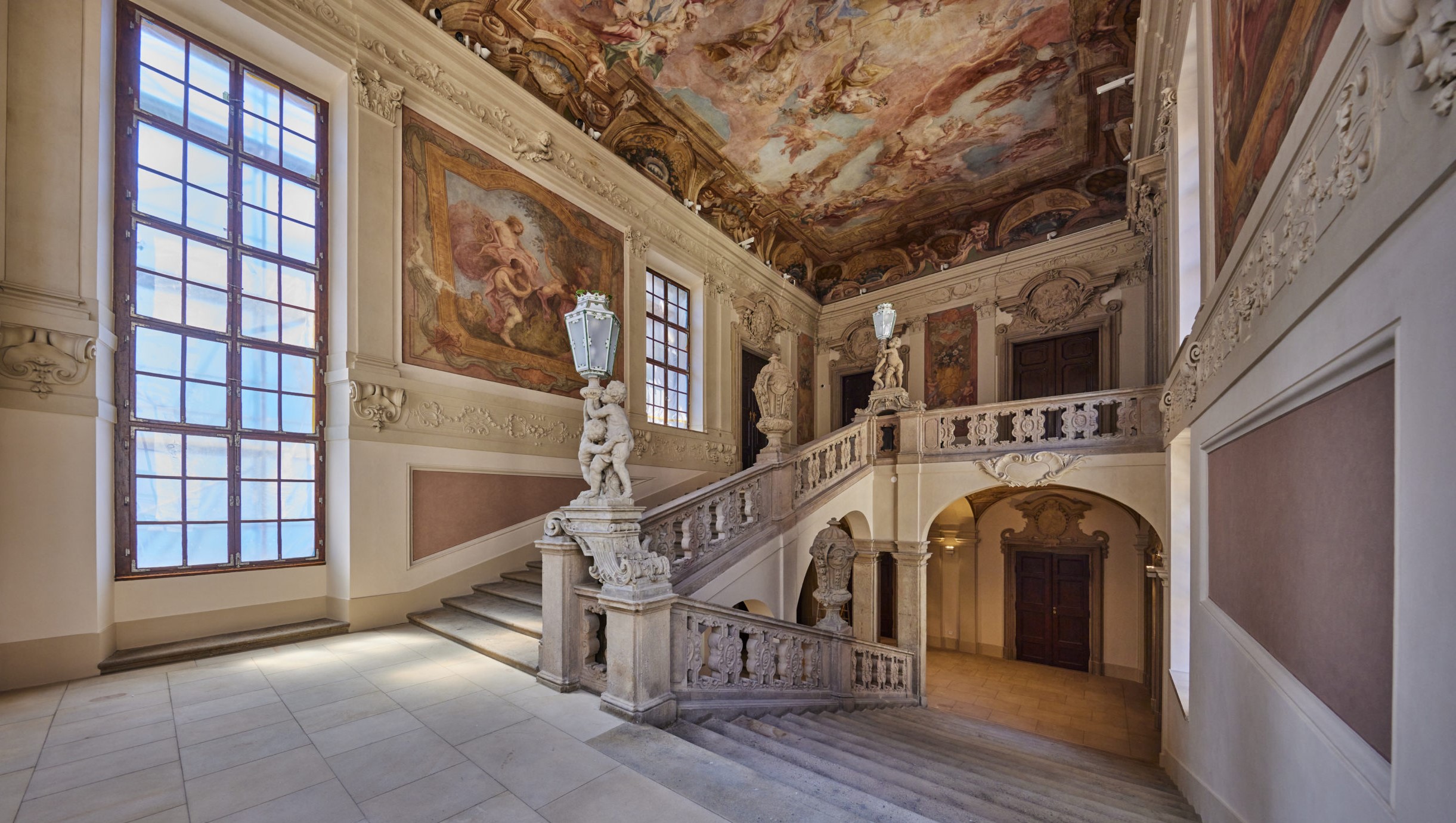Prague is renowned for its most famous tourist attractions that call visitors from all over the world. However, beyond the most famous sites, including the Castle and the Clock Square, the Czech capital hides many more interesting attractions.
The secret lies in stepping outside the usual tourist routes, which are inevitably fascinating but too often reductive, and discovering the hidden and more authentic side of Prague. In addition to its romantic and monumental guise, dotted with castles, bridges, and picturesque atmospheres, Prague also manifests itself as a city full of bizarre and eccentric places capable of surprising.
Therefore, this article aims to propose a guide aimed at discovering the beauty of Prague away from the crowds of tourists.
Palaces and Libraries
The Klementinum and the Astronomical Tower
The Klementinum is one of the most impressive architectural complexes in Europe. Located near Charles Bridge, the Klementinum was the first Jesuit college in Prague dating back to 1556.
The building contains numerous historical gems including the Chapel of Mirrors, a genuine treasure unique to Bohemia whose luxuriously decorated interior with mirrors offers an unparalleled visual experience. Inside the building complex is also located the National Library in the famous Baroque Hall, renowned as one of the most beautiful and prestigious libraries in the world.
Equally impressive is the astronomical tower, offering a breathtaking panorama of Prague. Within its walls lie Europe’s oldest meteorological archives, meticulously recording observations for over 250 years.
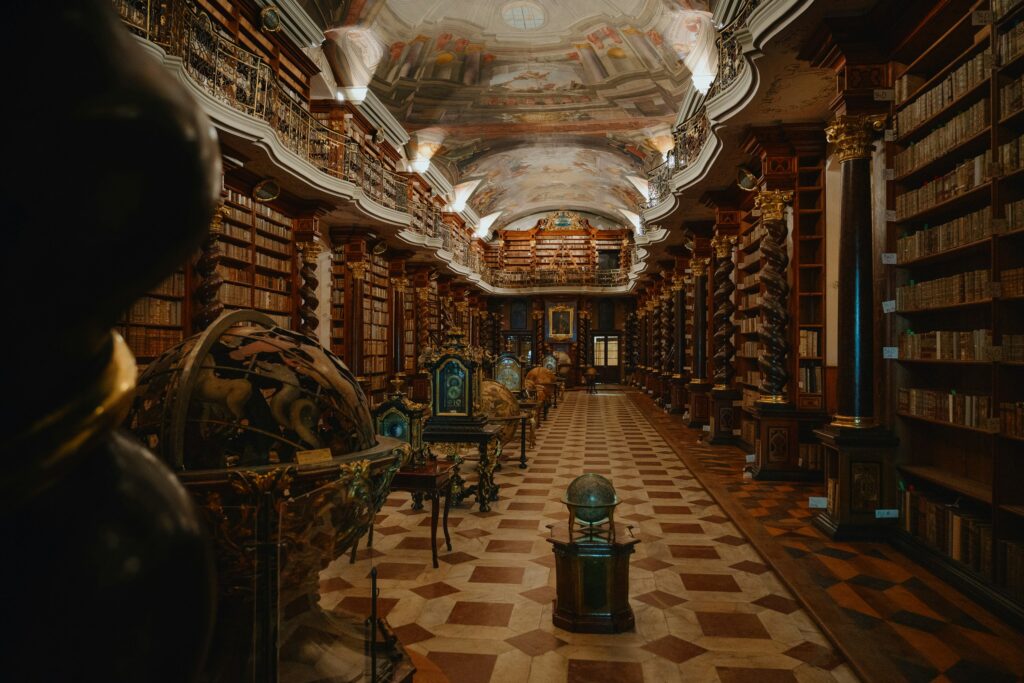
Faust’s House
Situated in Charles Square, Faust’s House derives its name from the legendary German figure enthralled by the occult, renowned for striking a notorious pact with Mephistopheles (the devil) within its walls. Throughout the centuries, alchemists and eccentric residents have wandered its corridors and called the palace home, perpetuating its enigmatic allure.
The Clam-Gallas Palace
The Clam-Gallas Palace represents one of the best-preserved aristocratic palaces in the world and the only Baroque palace in the city to be fully accessible. Located in the so-called “Royal Street” in the vicinity of Charles Bridge, this building was the center of cultural and social life in the 18th century, with luminaries such as Mozart and Beethoven performing there.
During its golden period, the palace hosted balls and concerts, which were also attended by prestigious guests. Today the building hosts the Prague City Archives and is still used for exhibitions, concerts, and social events in its elegant rooms and halls.
The House of the Golden Ring
Situated on Týnská Street in the Old Town, the House of the Golden Ring embodies the architectural fusion of two distinct medieval dwellings. This structure serves as a venue for exhibitions, offering visitors a captivating glimpse into Prague’s Gothic and Renaissance eras through showcases such as “The Prague of Charles IV” and “Prague 1606.”
Dating back to the early 17th century, the House of the Golden Ring derives its name from its coat of arms and boasts a rich history. Legend has it that the golden ring was lost by one of the nocturnal ghosts that roamed the Old Town during festivities, only to be discovered by a superstitious resident of Týnská Street. Hanging it above his doorway, he believed it possessed protective powers against malevolent forces.
The “Idiom” installation in the municipal library
In the Prague Municipal Library, reading books transcends mere consumption; it becomes an immersive experience through the “Idiom” installation. Conceived by Slovak artist Matej Kren, Idiom features a spiraling tower constructed from hundreds of stacked books, reaching the ceiling. Deliberately leaving a gap on one side, Kren invites viewers to enter the tower, where they become enveloped in a seemingly infinite whirlwind of pages, enhanced by an optical illusion crafted from cleverly positioned mirrors.
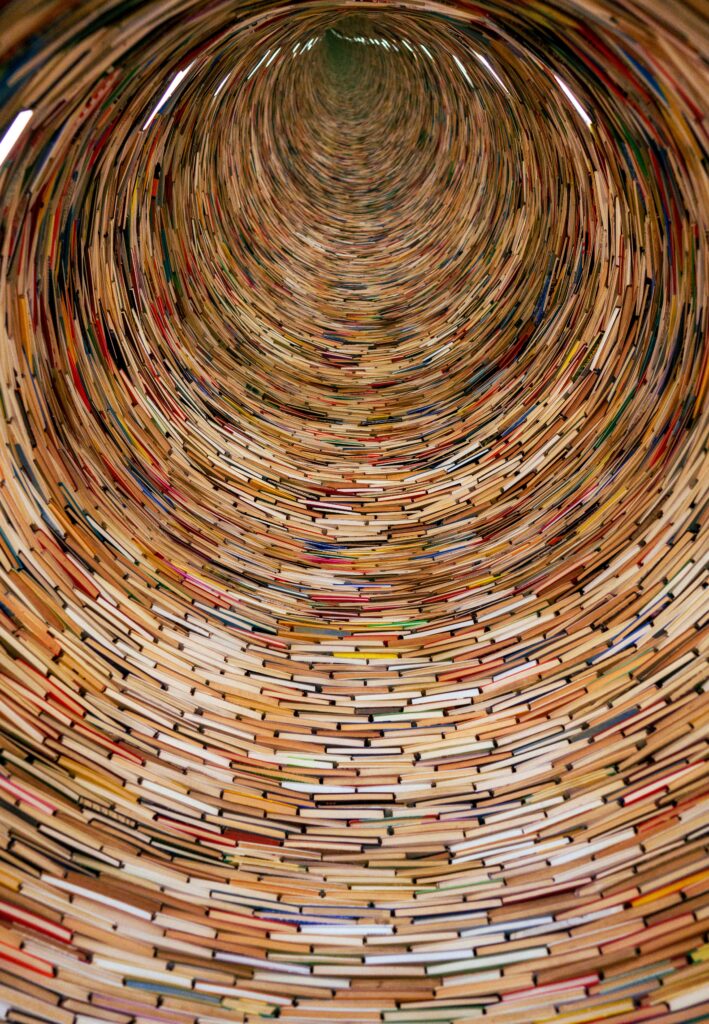
The basements of the old city hall
Beneath the Old City Hall, visitors are guided through an authentic medieval maze, accompanied by narrations from knowledgeable guides detailing life in 12th-13th century Prague. This Romanesque-Gothic labyrinth predates the city hall itself, forming the largest complex of medieval halls, corridors, and galleries in Prague.
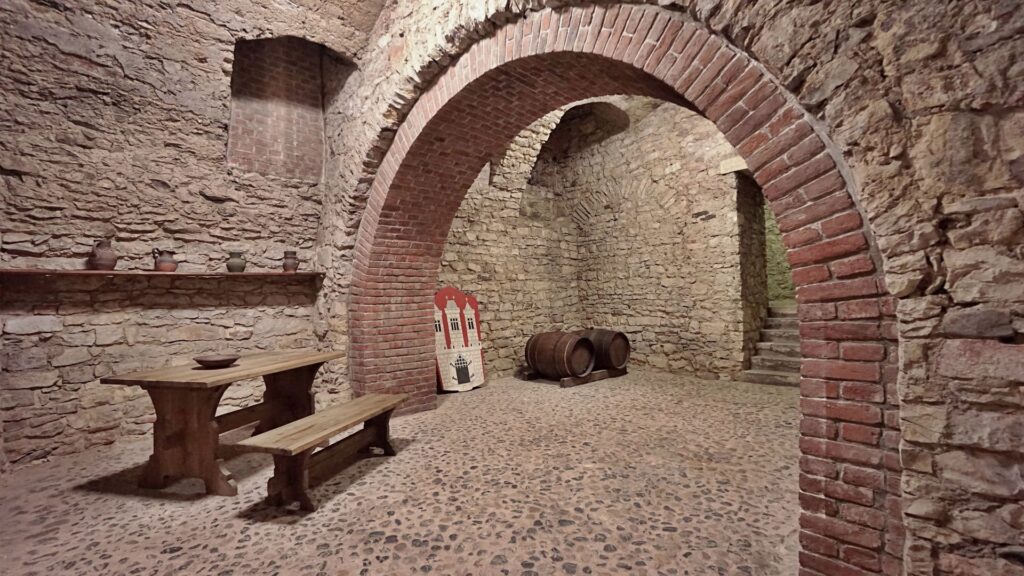
Parks and Gardens
Wallenstein Garden
The Wallenstein complex is the symbol of Prague Baroque. As you walk through the perfect geometrical gardens, you come across a grey, grotesque-looking wall reproducing the stalactites of a limestone cave whose gloomy tone contrasts sharply with the verdant lawns and colorful flowers in the garden.
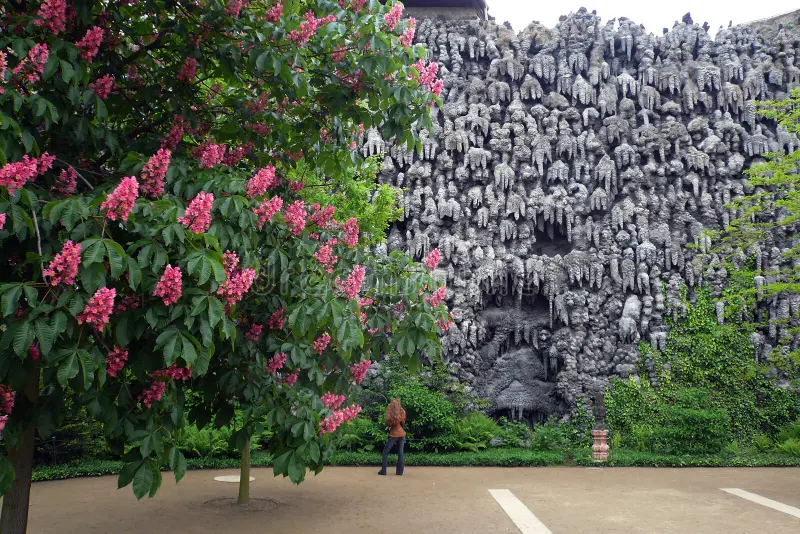
The magic cave in Petřín garden
The feeling of those who walk through this extravagant free art gallery hidden in the Petřín garden is that of finding themselves in a dreamlike dimension. The surreal atmosphere is accentuated by the installations of artist Reon Argondian.
Grébovka Park
Inspired by the Italian Renaissance, this park boasts a plethora of attractions including a fountain, waterfall, pond, pavilions, sculptures, and a captivating artificial cave, all set against a backdrop offering a unique panorama of Prague.
Entrepreneur Moritz Gröbe orchestrated the park’s design and construction in 1870, ingeniously utilizing excavated land from the Vinohrady Tunnel project. In addition to erecting a splendid villa for his family, Gröbe crafted an artificial cave within the park, which became an element that continues to define its character. Today, the park serves as a picturesque venue for ceremonies, celebrations, and various social gatherings, as well as a place for relaxation.
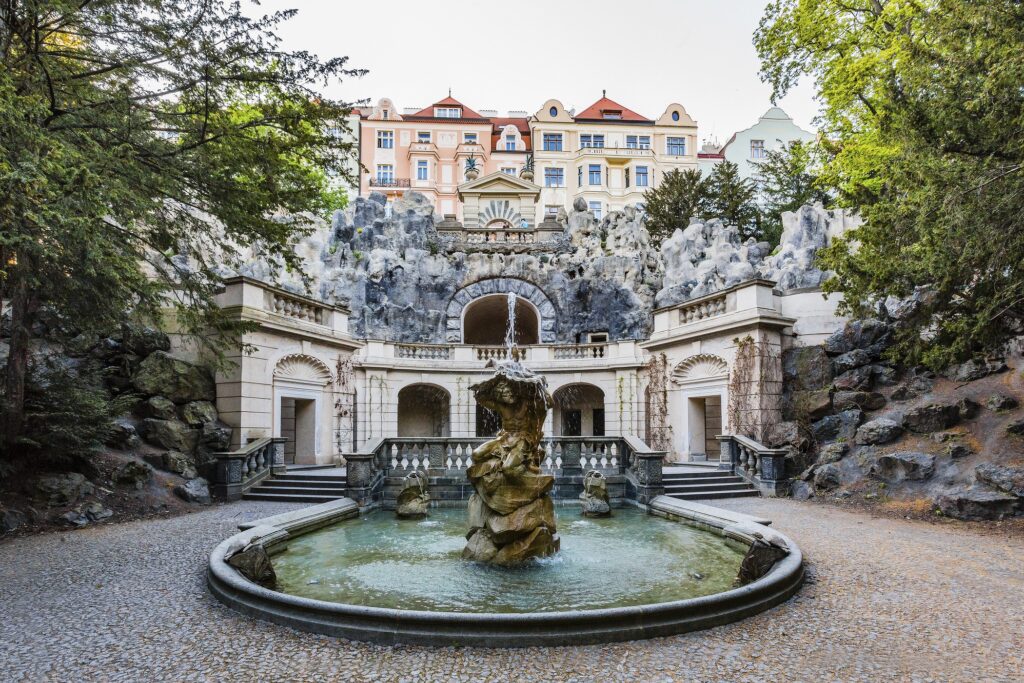
Monasteries and Churches
St James’ Cathedral
This is a Baroque church erected in the centre of Prague in the 13th century. Wonderful mosaics characterize its interior, at the center of which is situated a sumptuous gilded altar.
However, the true intrigue lies in a peculiar artifact near the entrance to Count Vratislav of Mitrovice’s tomb: the black forearm of a thief. This macabre element dates back 400 years to when the thief attempted to pilfer the high altar, only to get entangled in the statue of the Virgin Mary.
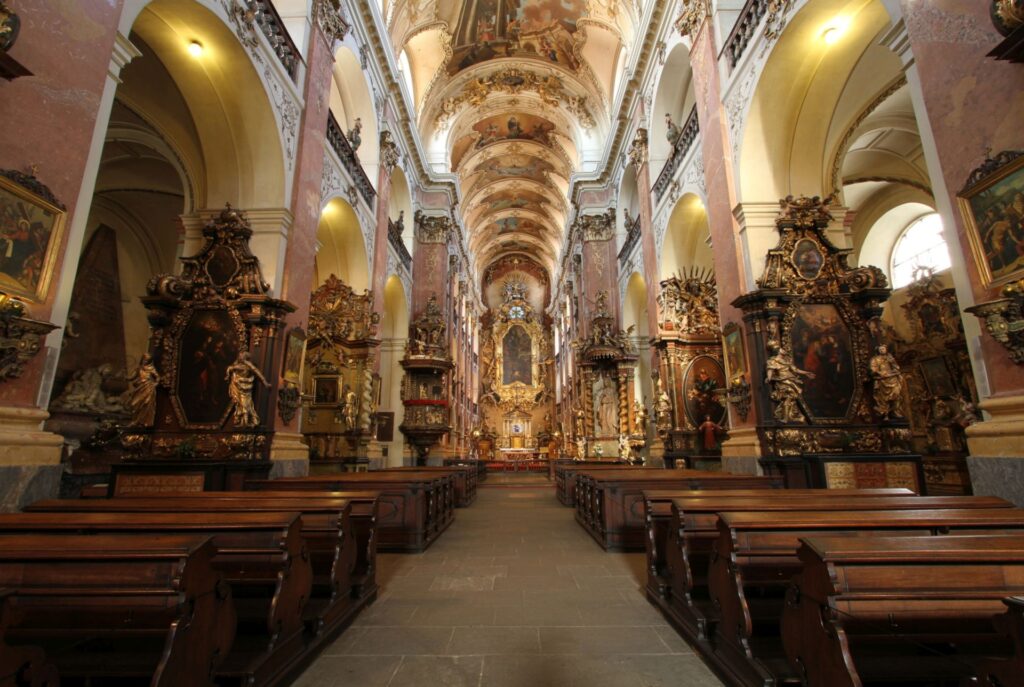
The Old-New Synagogue
A well-preserved 13th-century monument, it has become the symbol of the Jewish Quarter. This location is steeped in its own lore, and every Prague local has become familiar with the legend of the golem, a clay creature from Jewish folklore said to reside in the attic of this building. Tradition has it that this statue was made from a piece of clay taken from the banks of the Vltava by Prague rabbi Judah Loewn ben Bezalel in order to defend the ghetto from anti-Semites. Upon completion, the rabbi breathed life into the statue, but it frightened and created havoc in the city and was therefore put to sleep, never to be woken again.
Strahov Monastery
This ancient Premonstratensian monastery, which is still in operation with around 70 members, is one of the oldest and most fascinating monasteries in the Czech Republic. Since its foundation in 1143, the monastery has maintained an uninterrupted presence over the centuries, surviving fires, conflicts, revolutions, and repression by regimes. The complex of buildings boasts a number of unique treasures, including one of the most beautiful and well-preserved historical libraries in Europe and the Strahov art gallery hosting a wide valuable collection of monastic art from Central Europe.
However, the monastery does not only live off its past. Thanks to the beauty of its rooms and its atmosphere, it has been chosen as the set for numerous major Hollywood film productions. In particular, the library has been used as a set for some scenes in films like “From Hell”, starring Johnny Depp, and “Casino Royale”, one of the latest Agent 007 films starring Daniel Craig as James Bond.
Sculptures and more
In addition to the above-mentioned list, which inevitably does not exhaust the wonders of the Czech capital, we have to mention Cerny’s artworks, scattered throughout the city. The invitation is therefore to go and unearth them in order to admire them all (or almost all). Among the most renowned are the horse statue within Lucerne Palace, a cheeky parody of the iconic sculpture in Wenceslas Square, Kafka’s rotating head, the babies in Kampa Park, Freud suspended in mid-air, and the children scaling the television tower.
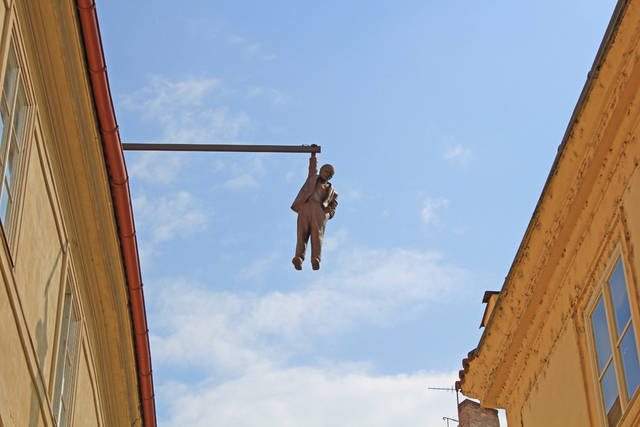
While Charles Bridge undeniably ranks among the city’s most iconic sites, its surroundings harbor enchanting hidden gems. Beyond merely connecting Old Town (Stare Mesto) with the Mala Strana district, Charles Bridge embodies a realm of mysteries enveloped in myths and legends, and, illuminated by ancient oil lanterns, the bridge exudes a captivating charm, particularly at night.
Traditionally, tourists traverse the bridge, rubbing the five-pointed cross in hopes of fulfilling their deepest desires. Yet, as previously mentioned, this place harbors lesser-known, alternative spots. Among them we cannot fail to mention Square Na Campé, a timeless place that became known as the “Little Venice of Prague,” and Devil’s Channel, somewhat reminiscent of Amsterdam, featuring colorful little houses lining the water’s edge, along with small bridges and vibrant clubs but, above all, historic mills once used for grain milling and laundry.
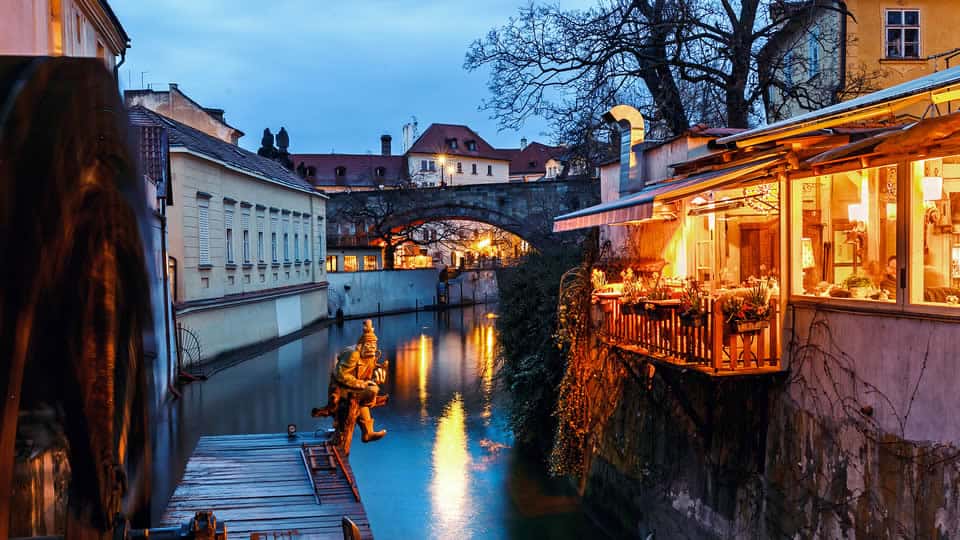
Sources: https://www.prague.eu/ , https://www.visitczechia.com/, https://www.berightback.it/, https://it.hotels.com/




